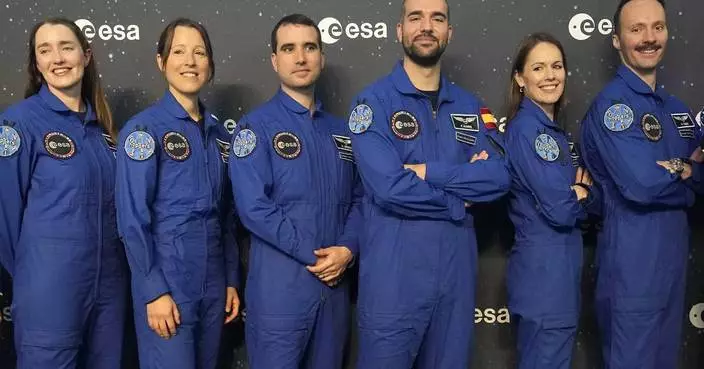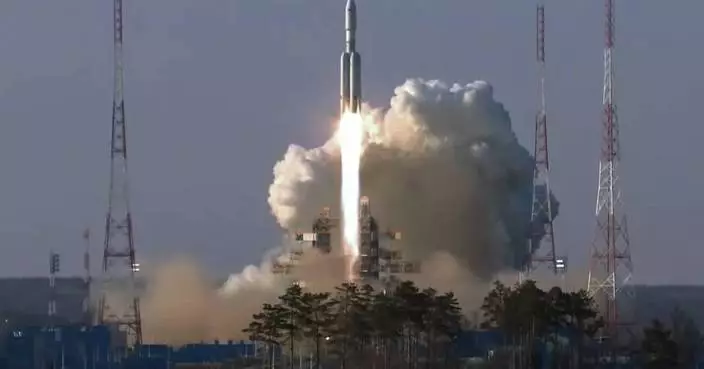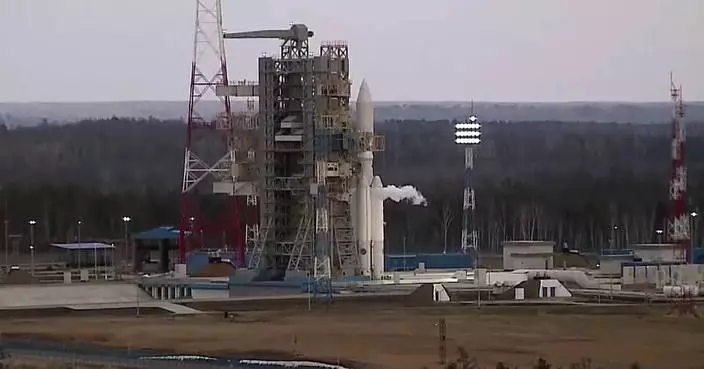A Russian cargo ship delivered a fresh load of fuel, food, and other supplies for the International Space Station on Tuesday, making it in record time.
The Progress MS-09 lifted off as scheduled at 3:51 a.m. (2151 GMT; 5:51 p.m. EDT Monday) from the Russia-leased Baikonur Cosmodrome in Kazakhstan. The unmanned spacecraft loaded with nearly three tons of supplies docked at the station in automatic mode less than four hours after the launch.
It marked the first time such a fast-track approach was used. In the past, it took the Progress ships up to two days to reach the space outpost.
Russia's space agency Roscosmos said the faster maneuver became possible thanks to a new version of the Soyuz booster rocket, noting that it puts the ship into orbit with higher precision.
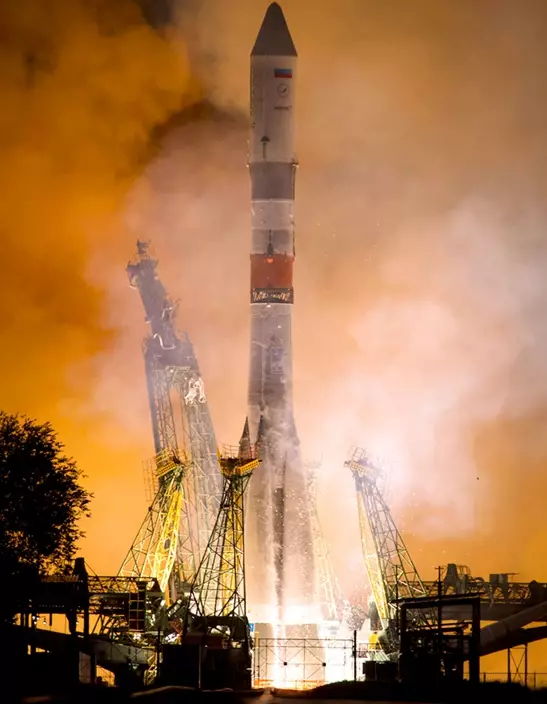
In this photo provided by Roscosmos Space Agency Press Service on Tuesday, July 10, 2018, Russian cargo ship Souz 2,1A takes off from the launch pad at Russia's main space facility in Baikonur, Kazakhstan. A Russian cargo ship has delivered a fresh load of fuel, food, and other supplies for the International Space Station. The Progress MS-09 lifted off as scheduled at 3:51 a.m. Tuesday (5:51 p.m. EDT Monday) from the Russia-leased Baikonur Cosmodrome in Kazakhstan. (Roscosmos Space Agency Press Service photo via AP)
NASA said that the fast trip to the station was intended to test an expedited capability that could be used on future Russian cargo and crew launch missions.
"It's a new achievement by our engineers," Russian cosmonaut Fyodor Yurchikhin said on state television. He added that after being tested on unmanned Progress vehicles the new fast approach will also be used by manned Soyus spacecraft that deliver crews to the station.
Roscosmos first tried to use the new maneuver last year, but it was aborted for technical reasons.
Roscosmos director Dmitry Rogozin hailed the faster rendezvous as a "big step forward" in a call with Russian crew on board the station after the docking.

In this photo provided by Roscosmos Space Agency Press Service on Tuesday, July 10, 2018, Russian cargo ship Souz 2,1A takes off from the launch pad at Russia's main space facility in Baikonur, Kazakhstan. A Russian cargo ship has delivered a fresh load of fuel, food, and other supplies for the International Space Station. The Progress MS-09 lifted off as scheduled at 3:51 a.m. Tuesday (5:51 p.m. EDT Monday) from the Russia-leased Baikonur Cosmodrome in Kazakhstan. (Roscosmos Space Agency Press Service photo via AP)
Rogozin tweeted that the fast-track approach will be used in the future for assembling spacecraft in orbit for missions into deep space.
The station's current crew includes NASA astronauts Drew Feustel, Ricky Arnold and Serena Aunon-Chancellor, a European Space Agency astronaut from Germany, Alexander Gerst, and Russians Oleg Artemyev and Sergey Prokopyev.
TOKYO (AP) — Japan’s space agency announced Friday a plan to launch a major upgrade to its satellite imaging system, as a new flagship rocket is put to the test for a third time.
The Japan Aerospace Exploration Agency that an H3 rocket will be launched from the Tanegashima Space Center, on a southwestern Japanese island, early afternoon on June 30, with a launch window that runs through the end of July.
The rocket will be carrying an Advanced Land Observation Satellite, ALOS-4, tasked primarily with Earth observation and data collection for disaster response and mapmaking, as well as with monitoring military activity, such as missile launches, with an infrared sensor developed by the Defense Ministry. The ALOS-4 is a successor to the current ALOS-2 and can observe a much wider area.
The launch will be the H3's third, coming after a failed debut in March 2023 and a successful launch on Feb. 17. During the first attempt, the rocket's second stage engine did not ignite and the rocket had to be destroyed along with its main payload, a satellite that was supposed to be the ALOS-3.
During H3 No. 2's successful test flight, it carried two commercially-developed observation microsatellites and an ALOS mockup.
JAXA and its main contractor Mitsubishi Heavy Industries have been developing H3 as a successor to its current mainstay, H-2A, which is set to retire after two more flights. MHI will eventually take over H3 production and launches from JAXA and hopes to make it commercially viable.
Japan sees a stable, commercially competitive space transport capability as key to the country's space program and national security.
The 57-meter (187-foot) long H3 rocket is designed to carry larger payloads than the H-2A at about half its launch cost.

FILE - JAXA H3 rocket project managers Masashi Okada, right, and Mayuki Niitsu brief journalists in front of the second stage of a H3 rocket, set for a full-fledged launch later this year after two test flights, inside the Mitsubishi Heavy Industries' Nagoya Aerospace Systems Works Tobishima Plant in Tobishima, Aichi prefecture Thursday, March 21, 2024. Japan’s space agency announced Friday, April 26, that it will launch its new flagship rocket H3 on June 30 carrying an observation satellite for disaster response and security purposes, a key mission that it had failed in its debut flight last year. (AP Photo/Mari Yamaguchi, File)
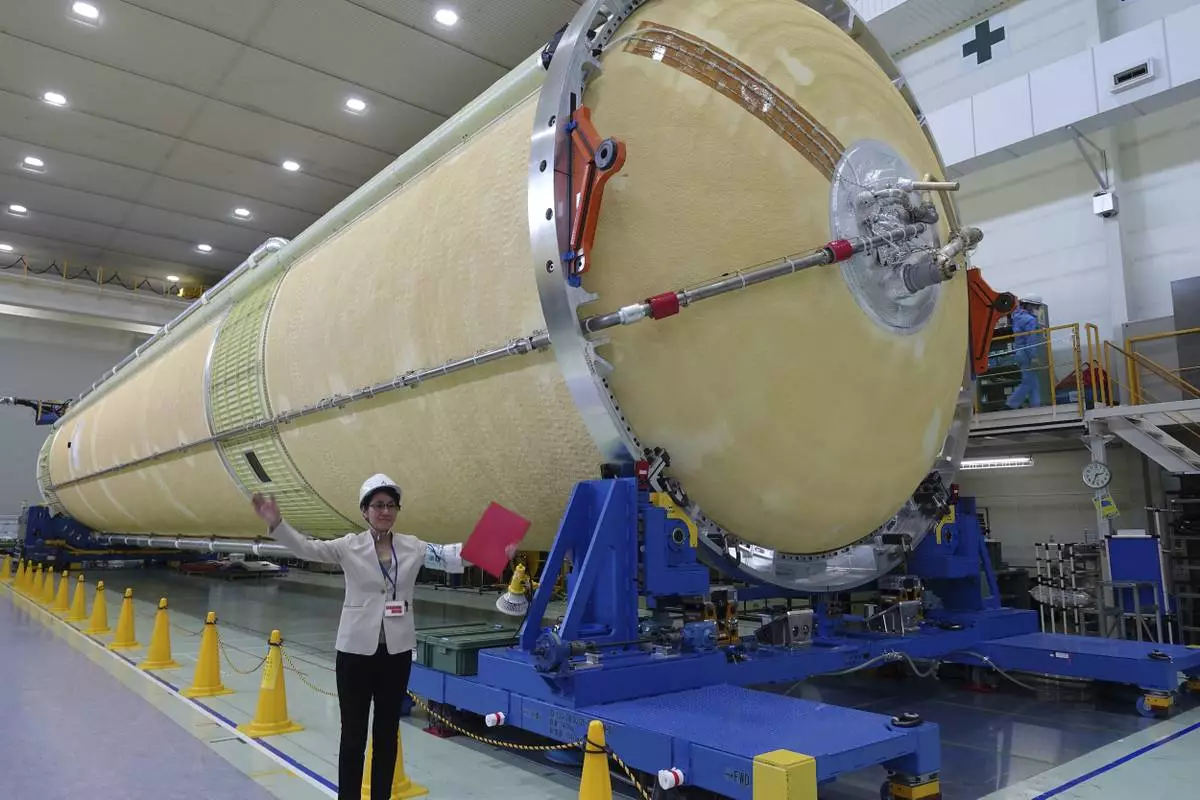
FILE - A Mitsubishi Heavy Industries staff member stands next to the top of the first stage of a H3 rocket, inside the Mitsubishi Heavy Industries' Nagoya Aerospace Systems Works Tobishima Plant in Tobishima, Aichi prefecture Thursday, March 21, 2024. Japan’s space agency announced Friday, April 26, that it will launch its new flagship rocket H3 on June 30 carrying an observation satellite for disaster response and security purposes, a key mission that it had failed in its debut flight last year.(AP Photo/Mari Yamaguchi)








